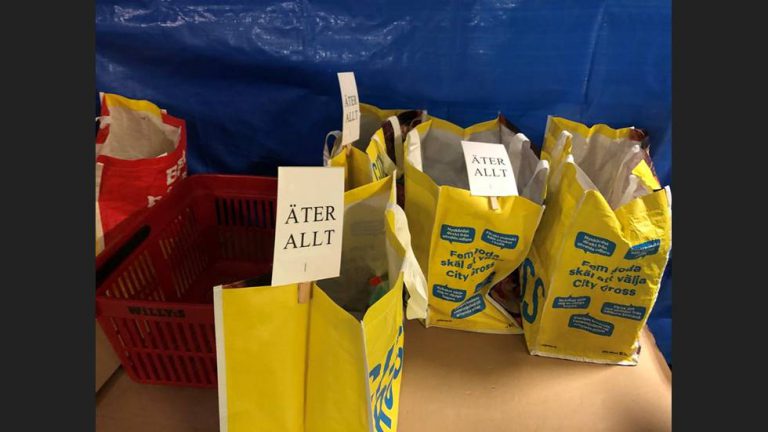Att ta hand om överskottsmat från butiker och livsmedelsindustrin och donera överskottet till behövande är inte något nytt fenomen globalt, men att göra detta för att minska matsvinnet är tämligen nytt. Som ett resultat av detta så har det på senare tid kommit en rad aktörer som på olika sätt försöker hitta vägar för att ta hand om överskottsmaten till olika kundgrupper via olika distributionssätt. Frågan som kan ställas är vilken nytta som den levererade överskottsmaten ger och för vem? I den nya artikeln “Sustainability Assessment of Food Redistribution Initiatives in Sweden” undersöker vi en rad olika distributionssätt för överskottsmat och vilka sociala, miljömässiga och ekonomiska nyttor dessa skapar. Resultaten visar att använda sig av matkassar till socialt utsatta grupper genererar den största vinsten i termer av att minimera växthusgasutsläpp. Att använda sig av överskottsmat för att producera nya produkter visade sig skapa högst social nytta då det undersökta konceptet skapade flest arbetstillfällen (arbetade timmar per kg distribuerad mat). Problemet som samtliga iniativ har är att få ekonomin att gå ihop, då endast två av de undersökta fallen gick med vinst och inte var direkt beroende av extern finansiering.

Food banks that redistribute surplus food from retailers and the food industry to people in need are not a new concept globally, but their connection to food waste prevention is new. As a result, new types of food redistribution units are emerging and diversifying to find new target groups and distribution methods. The aim of a new study “Sustainability Assessment of Food Redistribution Initiatives in Sweden” was to identify and study surplus food redistribution units in Sweden, and then to assess the impact on several sustainability indicators for selected redistribution units, in order to increase knowledge on the types of values these redistribution concepts generate. The methods used for analyzing the scenarios were Environmental Life Cycle Assessment, Life Cycle Costing and Social Life Cycle Assessment. The results showed that providing food bags to socially exposed people generated the largest reduction of greenhouse gas emissions per kg of redistributed food. Reprocessing surplus food to a high-quality end-product was attributed to a high social value, due to job creation effects in the high number of working hours required per kg of redistributed food. With regard to economic impacts, all but two scenarios studied had monthly financial losses and therefore needed other sources of financial support.
The article has been published open access in MDPI resources: Bergström, P.; Malefors, C.; Strid, I.; Hanssen, O.J.; Eriksson, M. Sustainability Assessment of Food Redistribution Initiatives in Sweden. Resources 2020, 9, 27. doi.org/10.3390/resources9030027
